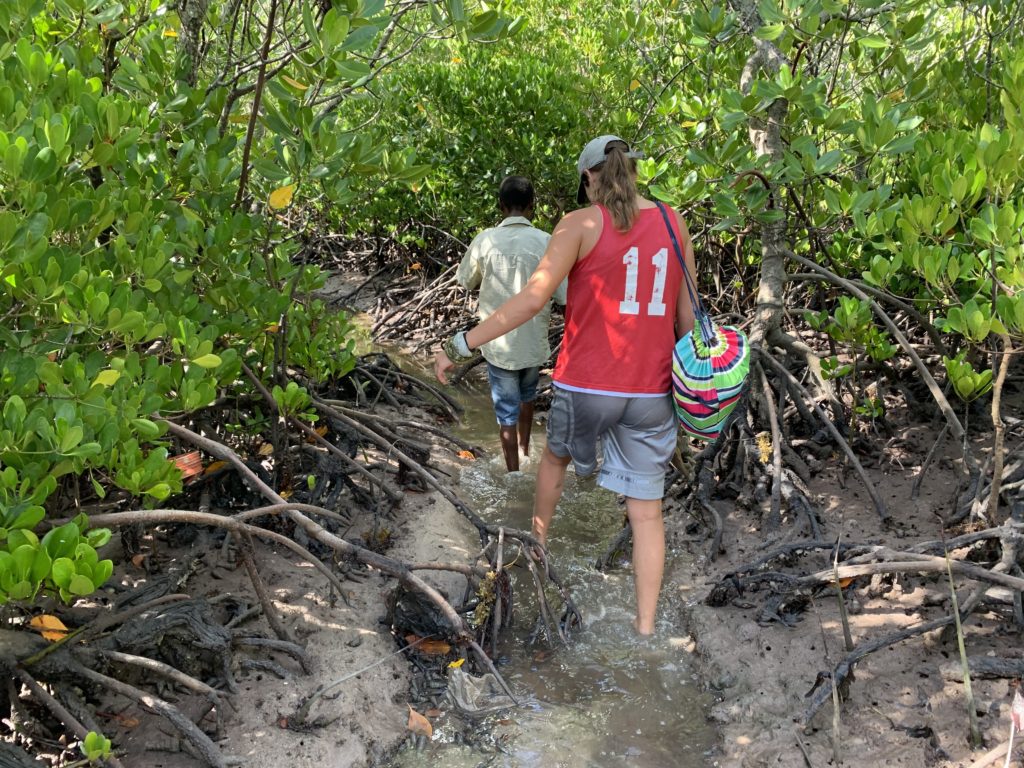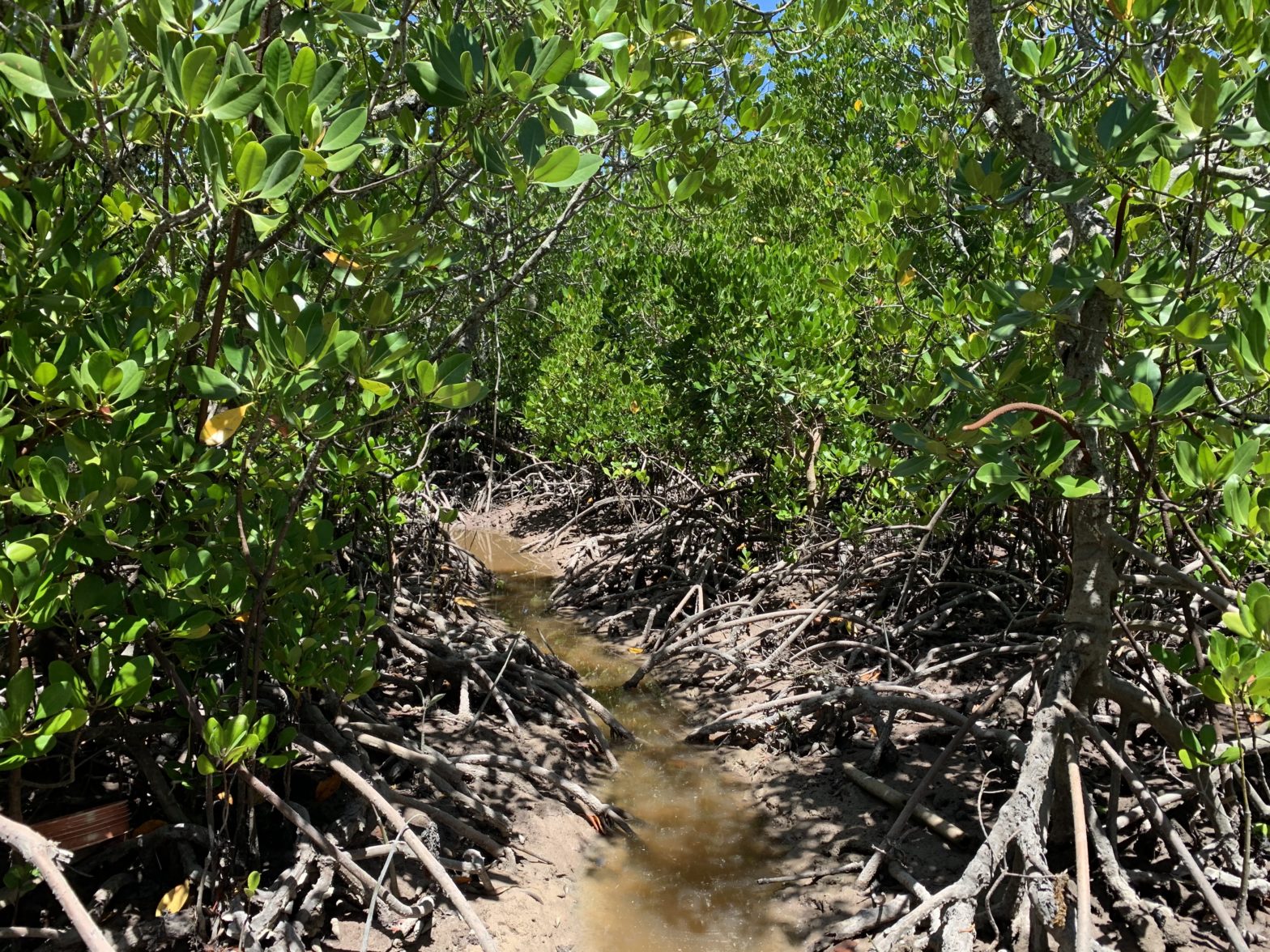
SIT is a school for hands-on learning experiences. One of those experiences offered across all of their programs is the Independent Study Project, better known as the ISP. Under normal circumstances, the ISP involves a prep week, three weeks of data collection, and then one week to work on a paper. Under COVID circumstances, they gave us one day for prep and three days for data collection…
Given the situation, I chose to study mangrove crab populations within the Mida Creek mangrove forest. I chose this study given our pre-existing relationship with one of the beach guides there named Hassan. One other student chose to study mangroves at the same location, which gave us the opportunity to work together.
The First day we arrived on-site, we spent it getting the lay of the land. Hassan took us on a five mile hike through the mangroves. The mangroves at Mida Creek are separated into three distinct zones characterized by specific species of mangroves. Part of my study was spent trying to figure out if crab species were also confined to specific zones.
Below are some of the crabs I was able to categorize on my prep day with Hassan’s help.








The following three days were spent collecting data. Data was collected using a transect and quadrat method. In simpler terms, this entails laying out a long line (200 meters in our case) which is our transect. Quadrats (which are just squares of predetermined size) were then placed every 20 meters along our transect. Everything that landed within the quadrat was sampled and recorded. I wrote down all species of crabs I saw along with their numbers while my partner Gilley recorded the mangroves species present.
During those three days, we sampled one zone a day. What we didn’t know ahead of time was that the third zone was actually on an island. By the time we figured this out, we were already into the third day of sampling. Luckily for us, Hassan had a few connections up the creek.
Once across the bay, we were able to collect all of our data from the third zone. We even managed to meet some local fisherman who gave us some fresh squid.
Now that we had “all” the data we needed to complete our paper, it was time to celebrate. Our class spent one last farewell cruise on our now loved Waka Waka before heading out the following morning. Thank you Kenya for all you had to offer!
Below is an extra video I thought worth sharing showcasing thousands of soldier crabs


